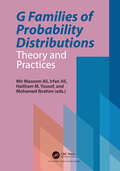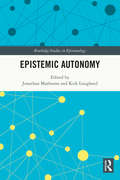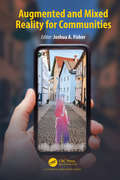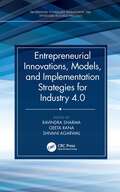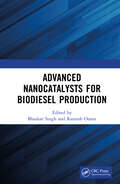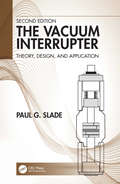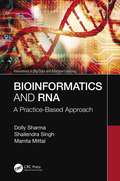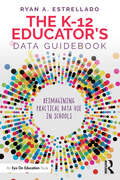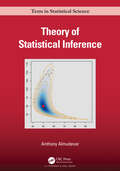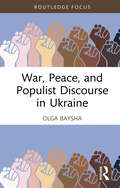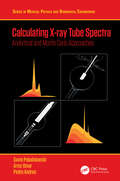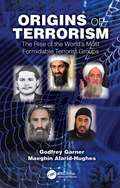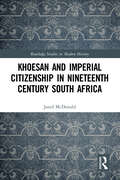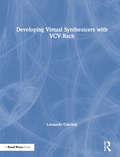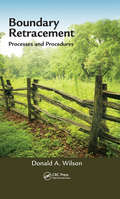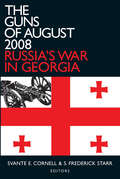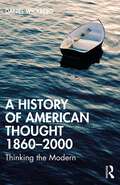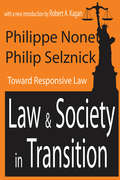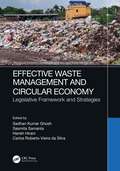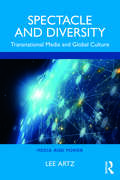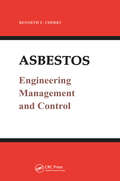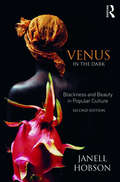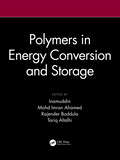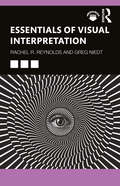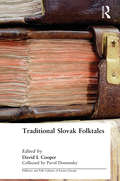- Table View
- List View
G Families of Probability Distributions: Theory and Practices
by Mir Masoom Ali Irfan Ali Haitham M. Yousof Mohamed IbrahimStatistical distributions are essential tools to model the characteristics of datasets, such as right or left skewness, bi-modality or multi-modality observed in different applied sciences, such as engineering, medicine, and finance. The well-known distributions like normal, Weibull, gamma and Lindley are extensively used because of their simple forms and identifiability properties. In the last decade, researchers have focused on the more complex and flexible distributions, referred to as Generalized or simply G families of probability distributions, to increase the modelling capability of these distributions by adding one or more shape parameters.The main aim of this edited book is to present new contributions by researchers in the field of G families of probability distributions. The book will help researchers to: Develop new univariate continuous and discrete G families of probability distributions. Develop new bivariate continuous and discrete G families of probability distributions. Derive beneficial mathematical properties such as ordinary and incomplete moments, moment generating functions, residual life and reversed residual life functions, order statistics, quantile spread ordering and entropies, and some bivariate and multivariate extensions of the new and existing models using a simple-type copula.
Epistemic Autonomy (Routledge Studies in Epistemology)
by Jonathan Matheson Kirk LougheedThis is the first book dedicated to the topic of epistemic autonomy. It features original essays from leading scholars that promise to significantly shape future debates in this emerging area of epistemology.While the nature of and value of autonomy has long been discussed in ethics and social and political philosophy, it remains an underexplored area of epistemology. The essays in this collection take up several interesting questions and approaches related to epistemic autonomy. Topics include the nature of epistemic autonomy, whether epistemic paternalism can be justified, autonomy as an epistemic value and/or vice, and the relation of epistemic autonomy to social epistemology and epistemic injustice.Epistemic Autonomy will be of interest to researchers and advanced students working in epistemology, ethics, and social and political philosophy.
Augmented and Mixed Reality for Communities
by Joshua A. FisherUsing mixed and augmented reality in communities is an emerging media practice that is reshaping how we interact with our cities and neighbors. From the politics of city hall to crosswalks and playgrounds, mixed and augmented reality will offer a diverse range of new ways to interact with our communities. In 2016, apps for augmented reality politics began to appear in app stores. Similarly, the blockbuster success of Pokémon Go illustrated how even forgotten street corners can become a magical space for play. In 2019, a court case in Milwaukee, Wisconsin, extended first amendment rights to augmented reality. For all the good that these emerging media provide, there will and have been consequences. Augmented and Mixed Reality for Communities will help students and practitioners navigate the ethical design and development of these kinds of experiences to transform their cities. As one of the first books of its kind, each chapter in the book prepares readers to contribute to the Augmented City. By providing insight into how these emerging media work, the book seeks to democratize the augmented and mixed reality space.Authors within this volume represent some of the leading scholars and practitioners working in the augmented and mixed reality space for civic media, cultural heritage, civic games, ethical design, and social justice. Readers will find practical insights for the design and development to create their own compelling experiences. Teachers will find that the text provides in-depth, critical analyses for thought-provoking classroom discussions.
Entrepreneurial Innovations, Models, and Implementation Strategies for Industry 4.0 (ISSN)
by Ravindra Sharma Geeta Rana Shivani AgarwalThis book explores the link between entrepreneurship and innovation, providing an understanding of the latest developments in the field. It explores numerous challenges to entrepreneurship, such as failures and socio-economic issues, and presents concepts, models, and implementation strategies for Industry 4.0.Industry 4.0 presents unique challenges and unique opportunities to entrepreneurs. Social, techno, and women’s entrepreneurship, among other business sectors and domains, are discussed in this new context. This book highlights the strategies of successful start-up organizations, focusing on the most critical factors for starting a new enterprise in today’s business environment, and provides efficient remedies for common problems. These strategies and solutions will help build a sustainable development model for developing economies and contribute to a global awareness of the entrepreneurship environment.Entrepreneurial Innovations, Models, and Implementation Strategies for Industry 4.0 is both a practical guide for new entrepreneurs to establishing start-ups and an enlightening collection of research for graduate students, postgraduate students, scholars, and academicians across all disciplines. Policymakers will also benefit from this book’s understanding of entrepreneurial ecosystems and their applications.
Advanced Nanocatalysts for Biodiesel Production
by Bhaskar Singh Ramesh OraonAdvanced Nanocatalysts for Biodiesel Production is a comprehensive and advanced book on practical and theoretical concepts of nanocatalysts dealing with future processing techniques towards environmental sustainability. The book critically discusses on latest emerging advanced nanocatalysts for biodiesel production aimed at reducing complexities and cost in the quest to meet future energy demands. Efforts have been made at clarifying the scope and limitations of biodiesel production in large-scale commercialization. The book discusses the size-dependent catalytic properties of nanomaterials and their working mechanisms in biodiesel production. Life cycle assessment of optimized viable feedstock from domestic as well as industrial waste is also addressed to improve the efficiency of biodiesel production. The book will be a valuable reference source for researchers and industrial professionals focusing on elementary depth analysis of nanocatalyst multifunctional technological applications in seeking key ideas for mimicking biodiesel production towards ecology and the economy.Key Features Provides a comprehensive environmental assessment of advanced nanocatalysts for biodiesel production to meet tha world’s energy demands Discusses the green platform-based nanocatalysts like metal oxides/sulphides, 2D layered material synthesis and their relevance for biodiesel production. Presents a pathway for cheaper, cleaner and more environmentally friendly processing techniques for biodiesel production
The Vacuum Interrupter: Theory, Design, and Application
by Paul G. SladeTitle: The Vacuum Interrupter: Theory, Design, and ApplicationShelving guide: Electrical EngineeringDr. Paul Slade draws from his nearly six decades of active experience to develop this second edition of The Vacuum Interrupter: Theory, Design, and Application. This book begins by discussing the design requirements for high voltage vacuum interrupters and then the contact requirements to interrupt the vacuum arc. It then continues by describing the various applications in which the vacuum interrupter is generally utilized.Part 1 of this book begins with a detailed review of the vacuum breakdown process. It continues by covering the steps necessary for the design and the manufacture of a successful vacuum interrupter. The vacuum arc is then discussed, including how it is affected as a function of current. An overview of the development and use of practical contact materials, along with their advantages and disadvantages, follows. Contact designs that are introduced to control the high current vacuum arc are also analyzed.Part 2, on application, begins with a discussion of the arc interruption process for low current and high current vacuum arcs. It examines the voltage escalation phenomenon that can occur when interrupting inductive circuits. The occurrence of contact welding for closed contacts subjected to the passage of high currents, and for contacts when closing on high currents, is explored. The general requirements for the successful manufacture and testing of vacuum circuit breakers is then presented. The general application of vacuum interrupters to switch load currents, especially when applied to capacitor circuits, is also given. The interruption of high short circuit currents is presented along with the expected performance of the two major contact designs.Owing to the ever-increasing need for environmentally friendly circuit protection devices, the development and application of the vacuum interrupter will only increase in the future. At present the vacuum circuit breaker is the technology of choice for distribution circuits (5kV to 40.5kV). It is increasingly being applied to transmission circuits (72.5kV to 242kV). In the future, its application for protecting high voltage DC networks is assured.Audience This is a practical source book for engineers and scientists interested in studying the development and application of the vacuum interrupter Research scientists in industry and universities Graduate students beginning their study of vacuum interrupter phenomena Design engineers applying vacuum interrupters in vacuum switches, vacuum contactors, vacuum circuit breakers, and vacuum contactors It provides a unique and comprehensive review of all aspects of vacuum interrupter technology for those new to the subject and for those who wish to obtain a deeper understanding of its science and application Scientists and engineers, who are beginning their research into vacuum breakdown and aspects of the vacuum arc, will find the extensive bibliography and phenomenological descriptions to be a useful introduction
Bioinformatics and RNA: A Practice-Based Approach (Innovations in Big Data and Machine Learning)
by Dolly Sharma Shailendra Singh Mamta MittalThis book offers a unique balance between a basic introductory knowledge of bioinformatics and a detailed study of algorithmic techniques. Bioinformatics and RNA: A Practice-Based Approach is a complete guide on the fundamental concepts, applications, algorithms, protocols, new trends, challenges, and research results in the area of bioinformatics and RNA.The book offers a broad introduction to the explosively growing new discipline of bioinformatics. It covers theoretical topics along with computational algorithms. It explores RNA bioinformatics, which contribute to therapeutics and drug discovery. Implementation of algorithms in a DotNet Framework with code and complete insight on the state-of-the-art and recent advancements are presented in detail. The book targets both novice readers as well as practitioners in the field. FEATURES Offers a broad introduction to the explosively growing new discipline of bioinformatics Covers theoretical topics and computational algorithms Explores RNA bioinformatics to unleash the potential from therapeutics to drug discovery Discusses implementation of algorithms in DotNet Frameworks with code Presents insights into the state of the art and recent advancements in bioinformatics The book is useful to undergraduate students with engineering, science, mathematics, or biology backgrounds. Researchers will be equally interested.
The K-12 Educator’s Data Guidebook: Reimagining Practical Data Use in Schools
by Ryan A. EstrelladoThe K-12 Educator’s Data Guidebook is a comprehensive field guide for school professionals learning to use data. “Non-data people,” rejoice! Requiring no prior proficiency in data tools and programming, this book validates the implicit challenges of learning to use data to empower educators and features original real-world examples from in-service educators to illustrate common problem-solving. Each chapter uses stories, humor, and a human approach to set the tone for a safe and fun learning experience. Through this highly practical foundation, everyday educators can better engage school initiatives, professional development, and instructional challenges that require competent data use for improving school systems.
Theory of Statistical Inference (Chapman & Hall/CRC Texts in Statistical Science)
by Anthony AlmudevarTheory of Statistical Inference is designed as a reference on statistical inference for researchers and students at the graduate or advanced undergraduate level. It presents a unified treatment of the foundational ideas of modern statistical inference, and would be suitable for a core course in a graduate program in statistics or biostatistics. The emphasis is on the application of mathematical theory to the problem of inference, leading to an optimization theory allowing the choice of those statistical methods yielding the most efficient use of data. The book shows how a small number of key concepts, such as sufficiency, invariance, stochastic ordering, decision theory and vector space algebra play a recurring and unifying role. The volume can be divided into four sections. Part I provides a review of the required distribution theory. Part II introduces the problem of statistical inference. This includes the definitions of the exponential family, invariant and Bayesian models. Basic concepts of estimation, confidence intervals and hypothesis testing are introduced here. Part III constitutes the core of the volume, presenting a formal theory of statistical inference. Beginning with decision theory, this section then covers uniformly minimum variance unbiased (UMVU) estimation, minimum risk equivariant (MRE) estimation and the Neyman-Pearson test. Finally, Part IV introduces large sample theory. This section begins with stochastic limit theorems, the δ-method, the Bahadur representation theorem for sample quantiles, large sample U-estimation, the Cramér-Rao lower bound and asymptotic efficiency. A separate chapter is then devoted to estimating equation methods. The volume ends with a detailed development of large sample hypothesis testing, based on the likelihood ratio test (LRT), Rao score test and the Wald test. Features This volume includes treatment of linear and nonlinear regression models, ANOVA models, generalized linear models (GLM) and generalized estimating equations (GEE). An introduction to decision theory (including risk, admissibility, classification, Bayes and minimax decision rules) is presented. The importance of this sometimes overlooked topic to statistical methodology is emphasized. The volume emphasizes throughout the important role that can be played by group theory and invariance in statistical inference. Nonparametric (rank-based) methods are derived by the same principles used for parametric models and are therefore presented as solutions to well-defined mathematical problems, rather than as robust heuristic alternatives to parametric methods. Each chapter ends with a set of theoretical and applied exercises integrated with the main text. Problems involving R programming are included. Appendices summarize the necessary background in analysis, matrix algebra and group theory.
War, Peace, and Populist Discourse in Ukraine (Routledge Focus on Communication Studies)
by Olga BayshaThis book explores the detrimental effects on global peace of populism’s tendency to present complex social issues in simplistic "good versus evil" terms. Analyzing the civilizational discourse of Ukrainian President Volodymyr Zelensky with respect to the ongoing war between Russia and Ukraine—with his division of the world into "civilized us" versus "barbarian them"—the book argues that such a one-dimensional representation of complex social reality leaves no space for understanding the conflict and has little, if any, potential to bring about peace.To deconstruct the "civilization versus barbarism" discourse propagated by Zelensky, the book incorporates into its analysis alternative articulations of the crisis by oppositional voices. The author looks at the writing of several popular Ukrainian journalists and bloggers who have been excluded from the field of political representation within Ukraine, where all oppositional media are currently banned. Drawing on the discourse theory of Ernesto Laclau and Chantal Mouffe, the author argues that the incorporation of alternative perspectives, and silenced voices, is vitally important for understanding the complexity of all international conflicts, including the current one between Russia and Ukraine.This timely and important study will be relevant for all students and scholars of media and communication studies, populist rhetoric, political communication, journalism, area studies, international relations, linguistics, discourse analysis, propaganda, and peace studies.
Calculating X-ray Tube Spectra: Analytical and Monte Carlo Approaches (ISSN)
by Gavin Poludniowski Artur Omar Pedro AndreoCalculating x-ray tube spectra provides a comprehensive review of the modelling of x-ray tube emissions, with a focus on medical imaging and radiotherapy applications. It begins by covering the relevant background, before discussing modelling approaches, including both analytical formulations and Monte Carlo simulation. Historical context is provided, based on the past century of literature, as well as a summary of recent developments and insights. The book finishes with example applications for spectrum models, including beam quality prediction and the calculation of dosimetric and image-quality metrics.This book will be a valuable resource for postgraduate and advanced undergraduate students studying medical radiation physics, in addition to those in teaching, research, industry and healthcare settings whose work involves x-ray tubes.Key Features: Covers simple modelling approaches as well as full Monte Carlo simulation of x-ray tubes. Bremsstrahlung and characteristic contributions to the spectrum are discussed in detail. Learning is supported by free open-source software and an online repository of code. An online repository of the code that accompanies this book can be found here: https://bitbucket.org/caxtus
Origins of Terrorism: The Rise of the World’s Most Formidable Terrorist Groups
by Godfrey Garner Maeghin Alarid-HughesOrigins of Terrorism: The Rise of the World’s Most Formidable Terrorist Groups examines the roots of Islamic terrorism, it’s history, and some of the foundational figures in prominent terrorist organizations. Throughout, the book also addresses the use of terrorism, the "hows" and "whys" of terrorists’ goals, and their modus operandi.Historically, insurgency operations have formed the basis of a number of terrorist groups—resistance to western powers, particularly the United States, and what is viewed as their unwanted interference in regional affairs. Sections are devoted to individual terror organizations, including some of the most well-known and resilient global movements—Al Qaeda, ISIS, the Taliban, and Boko Haram, among others. Coverage details where and how they originated, who the principal organizers were, how these individuals worked—or didn’t work—together. In this, the authors look at the circumstances that allowed for these leaders, and their groups’, development and success. In this, the authors expose interesting, little-known stories and facts about the specific upbringing, family life, and personal narrative around these organizations’ founders, as well as ties to other terrorist founders and organizations. For example, the relationship between individuals such as Osama bin Laden and Musab al Zarkawi (aka Ahmad al-Khalayleh)—the founder of ‘Al Qaeda in Iraq’ (AQI), which became ISIS—is examined in detail, providing readers with some of the "stories behind the stories" to understand the prominent figures and underpinnings of major terrorist organizations’ philosophies, formation, and elements that have led to their staying power.Origins of Terrorism will be a valuable resource for security and intelligence professionals, terrorism researchers, and students, providing a unique perspective to understand terrorism and terror movements in considering counterterror efforts.
Khoesan and Imperial Citizenship in Nineteenth Century South Africa (Routledge Studies in Modern History)
by Jared McDonaldThis volume explores the formative and expressive dynamics of Khoesan identity during a crucial period of incorporation as an underclass into Cape colonial society.Khoesan and Imperial Citizenship in Nineteenth Century South Africa emphasises loyalism and subjecthood – posited as imperial citizenship – as foundational aspects of Khoesan resistance to the debilitating effects of settler colonialism. The work argues that Khoesan were active in the creation of their identity as imperial citizens and that expressions of loyalty to the British Crown were reflective of a political and civic consciousness that transcended their racially defined place in Cape colonial society. Following a chronological trajectory from the mid-1790s to the late 1850s, author Jared McDonald examines the combined influences of colonial law, evangelical-humanitarianism, imperial commissions of inquiry, and the abolition of slavery as conduits for the notion of imperial citizenship. As histories and legacies of colonialism come under increasing scrutiny, the history of the Khoesan during this period highlights the complex nature of power and its imposition, and the myriad, nuanced ways in which the oppressed react, resist, and engage.This book will be of interest to scholars and students working on British imperialism in Africa, as well as histories of settler colonialism, nationalism, and loyalism.
Developing Virtual Synthesizers with VCV Rack
by Leonardo GabrielliDeveloping Virtual Synthesizers with VCV Rack takes the reader step by step through the process of developing synthesizer modules, beginning with the elementary and leading up to more engaging examples. Using the intuitive VCV Rack and its open-source C++ API, this book will guide even the most inexperienced reader to master efficient DSP coding to create oscillators, filters, and complex modules.Examining practical topics related to releasing plugins and managing complex graphical user interaction, with an intuitive study of signal processing theory specifically tailored for sound synthesis and virtual analog, this book covers everything from theory to practice. With exercises and example patches in each chapter, the reader will build a library of synthesizer modules that they can modify and expand.Supplemented by a companion website, this book is recommended reading for undergraduate and postgraduate students of audio engineering, music technology, computer science, electronics, and related courses; audio coding and do-it-yourself enthusiasts; and professionals looking for a quick guide to VCV Rack. VCV Rack is a free and open-source software available online.
Boundary Retracement: Processes and Procedures
by Donald A. WilsonThe survey and the transference are the distinctive and operative acts in the transmission of real property and, where they differ from each other, one must of necessity control the other. This book addresses the aforementioned concepts by external explanations in order to understand the discrepancies between them. It also helps to avoid expensive and wasteful litigation over boundaries that were previously not in conflict. The text offers an extensive review of the law for boundary retracement and cites numerous case examples.
The Guns of August 2008: Russia's War in Georgia (Studies of Central Asia and the Caucasus)
by Svante E. Cornell S. Frederick StarrIn the summer of 2008, a conflict that appeared to have begun in the breakaway Georgian territory of South Ossetia rapidly escalated to become the most significant crisis in European security in a decade. The implications of the Russian-Georgian war will be understood differently depending on one's narrative of what transpired and perspective on the broader context. This book is designed to present the facts about the events of August 2008 along with comprehensive coverage of the background to those events. It brings together a wealth of expertise on the South Caucasus and Russian foreign policy, with contributions by Russian, Georgian, European, and American experts on the region.
A History of American Thought 1860–2000: Thinking the Modern
by Daniel WickbergThis book is a comprehensive overview of the history of modern American thought and examines a wide range of modern thought and thinkers from 1860, when Charles Darwin’s Origin of Species was published in the United States, to the end of the twentieth century.The focus of this volume is on the destabilizing effects of modern challenges to notions of fixed order and absolute truths, and the contradictory consequences for philosophical, political, social, and aesthetic thought. The intellectual response to the unprecedented changes of this era produced visions of both liberation from the hierarchies of the past and new forms of control and constraint. One of the central contradictions in modern thought was between biological and cultural ideas of social, psychological, and moral order. This is the first work to provide an interpretive vision of the entire period under consideration. Topics covered include evolutionary thought, philosophical Pragmatism, ideas of race and gender, pluralism and cultural relativism, Cold War Liberalism, science and religion, feminist thought, evolutionary psychology, and the late twentieth-century Culture Wars. Thinkers from William James and Charlotte Perkins Gilman through Judith Butler and Cornel West are analyzed as historical figures.This volume is an ideal resource for a general audience as well as undergraduate and graduate students in the field of American intellectual history.
Law and Society in Transition: Toward Responsive Law
by Philippe Nonet Philip Selznick Robert A. KaganYear by year, law seems to penetrate ever larger realms of social, political, and economic life, generating both praise and blame. Nonet and Selznick's Law and Society in Transition explains in accessible language the primary forms of law as a social, political, and normative phenomenon. They illustrate with great clarity the fundamental difference between repressive law, riddled with raw conflict and the accommodation of special interests, and responsive law, the reasoned effort to realize an ideal of polity. To make jurisprudence relevant, legal, political, and social theory must be reintegrated. As a step in this direction, Nonet and Selznick attempt to recast jurisprudential issues in a social science perspective. They construct a valuable framework for analyzing and assessing the worth of alternative modes of legal ordering. The volume's most enduring contribution is the authors' typology-repressive, autonomous, and responsive law. This typology of law is original and especially useful because it incorporates both political and jurisprudential aspects of law and speaks directly to contemporary struggles over the proper place of law in democratic governance. In his new introduction, Robert A. Kagan recasts this classic text for the contemporary world. He sees a world of responsive law in which legal institutions-courts, regulatory agencies, alternative dispute resolution bodies, police departments-are periodically studied and redesigned to improve their ability to fulfill public expectations. Schools, business corporations, and governmental bureaucracies are more fully pervaded by legal values. Law and Society in Transition describes ways in which law changes and develops. It is an inspiring vision of a politically responsive form of governance, of special interest to those in sociology, law, philosophy, and politics.
Effective Waste Management and Circular Economy: Legislative Framework and Strategies (The Circular Economy in Sustainable Solid and Liquid Waste Management)
by Dr Sasmita Samanta Dr Harish Hirani Mr Carlos Roberto Vieira Da Silva Filho Dr Sadhan Kumar GhoshEffective Waste Management and Circular Economy: Legislative Framework and Strategies is an invaluable resource for researchers, policymakers, implementers and PhD, graduate and Under Graduate level students in universities and colleges analysing the legal framework, strategies in waste management, circular economy adoption, use of mathematical and statistical modelling in setting waste management strategies, sanitation and Hygiene in waste management. While huge wastes are wasted by dumping, there is potential of resource circulation by enforcing legislative framework to effective resource utilisation and creating business opportunities. Circularity of resources in waste streams can contribute to a more secure, sustainable, and economically sound future through the followings: Effective legal framework, strategies and policy instruments, Adoption of circular economy and recycling technologies, Support of IoT and appropriate decision making and modelling, Adoption of alternatives to plastics and other hazardous materials, Economic feasibility as business case, commercialisation, generating employment. This book addresses most of the above issues in a lucid manner by experts in the field from different countries, which are helpful for the related stakeholders, edited by experts in the field.Sadhan Kumar Ghosh, Professor at Jadavpur University, internationally well-known expert working in varied interdisciplinary fields including waste management having research collaboration in 40 countries.Sasmita Samanta, Pro-Vice Chancellor, KIIT Deemed to be University, Bhubaneswar, Odisha, India having research experience in management & academic administration.Harish Hirani, Director at CSIR-CMERI, Durgapur, having wider fields of research in IIT Delhi with a number of research collaboration.Carlos RV Silva Filho, Director, Presidente, ABRELPE, Sao Paulo/SP - Brazil & Presidente, International Solid Waste Association, Netherlands has experience of working in number of international projects
Spectacle and Diversity: Transnational Media and Global Culture (ISSN)
by Lee ArtzThis book shows how transnational media operate in the contemporary world and what their impact is on film, television, and the larger global culture. Where a company is based geographically no longer determines its outreach or output. As media consolidate and partner across national and cultural boundaries, global culture evolves. The new transnational media industry is universal in its operation, function, and social impact. It reflects a shared transnational culture of consumerism, authoritarianism, cultural diversity, and spectacle. From Wolf Warriors and Sanju to Valerian: City of 1000 Planets and Pokémon, new media combinations challenge old assumptions about cultural imperialism and reflect cross-boundary collaboration as well as boundary-breaking cultural interpretation. Intended for students of global studies and international communication at all levels, the book will appeal to a wide range of readers interested in the way transnational media work and how that shapes our culture.
Asbestos: Engineering, Management and Control
by Kenneth F. CherryThis single source asbestos reference/text book incorporates major legal issues and cost estimating methods. Every aspect of abatement work from initial survey through final cleanup is detailed. In addition, medical aspects, respirator use, training, sample contracts and other topics, coupled with a practical approach, make this the book to have when the goal is to get the job done. The book contains lots of valuable information and data, including CFR 1910 and NFPA 220/241, and will serve as an ideal reference source for asbestos contractors, building owners, industrial hygienists, consultants, and schools.
Venus in the Dark: Blackness and Beauty in Popular Culture
by Janell HobsonIn this second edition of the remarkable, and now classic, cultural history of black women’s beauty, Venus in the Dark, Janell Hobson explores the enduring figure of the "Hottentot Venus" and the history of critical and artistic responses to her by black women in contemporary photography, film, literature, music, and dance.In 1810, Sara Baartman was taken from South Africa to Europe, where she was put on display at circuses, salons, museums, and universities as the "Hottentot Venus." The subsequent legacy of representations of black women’s sexuality—from Josephine Baker to Serena Williams to hip-hop and dancehall videos—refer back to her iconic image. Via a new preface, Hobson argues for the continuing influence of Baartman’s legacy, as her image still reverberates through the contemporary marketization of black women’s bodies, from popular music and pornography to advertising. A brand new chapter explores how historical echoes from previous eras map onto highly visible bodies in the twenty-first century. It analyzes fetishistic spectacles of the black "booty," with particular emphasis on the role of Beyoncé Knowles in the popularization of the "bootylicious" body, and the counter-aesthetic the singer has gone on to advance for black women’s bodies and beauty politics.By studying the imagery of the "Hottentot Venus," from the nineteenth century to now, readers are invited to confront the racial and sexual objectification and embodied resistance that make up a significant part of black women’s experience.
Polymers in Energy Conversion and Storage
by Inamuddin Mohd Imran Ahamed Rajender Boddula Tariq AltalhiThe research and development activities in energy conversion and storage are playing a significant role in our daily lives owing to the rising interest in clean energy technologies to alleviate the fossil-fuel crisis. Polymers are used in energy conversion and storage technology due to their low-cost, softness, ductility and flexibility compared to carbon and inorganic materials. Polymers in Energy Conversion and Storage provides in-depth literature on the applicability of polymers in energy conversion and storage, history and progress, fabrication techniques, and potential applications.Highly accomplished experts review current and potential applications including hydrogen production, solar cells, photovoltaics, water splitting, fuel cells, supercapacitors and batteries. Chapters address the history and progress, fabrication techniques, and many applications within a framework of basic studies, novel research, and energy applications.Additional Features Include: Explores all types of energy applications based on polymers and its composites Provides an introduction and essential concepts tailored for the industrial and research community Details historical developments in the use of polymers in energy applications Discusses the advantages of polymers as electrolytes in batteries and fuel cells This book is an invaluable guide for students, professors, scientists and R&D industrial experts working in the field.
Essentials of Visual Interpretation
by Rachel R Reynolds Greg NiedtEssentials of Visual Interpretation explains how to talk and write critically about visual media and to examine how evolving visual environments, media, and technologies affect human selfunderstanding and culture formation.Lively and accessibly written chapters provide a solid foundation in the tools and ideas of visual meaning, familiarizing readers with a growing, cross-cultural subfield, and preparing them to pursue thoughtful work in a variety of related disciplines. The authors include rich examples and illustrations—ranging from cave paintings to memes, from optical science to visual analytics, from ancient pictographs to smart phones—that engage students with the fascinating complexity of visual interpretation. Each chapter introduces students to key terms and concepts relevant to visual analysis, with ideas for short individual or group exercises to enhance understanding.The book is ideal as a primer in visual analysis and visual communication for students in courses within communication studies, cultural studies, digital humanities, semiotics, media studies, and visual anthropology.Online support materials include multimedia activities for students and links to additional resources for students and instructors.
Traditional Slovak Folktales
by David L. CooperThis delightful collection makes the rich but little-known Slovak folk culture available for English-language readers. Most of the fifty tales assembled here from the collections of folklorist Pavol Dobsinsky are translated into English for the first time. The poetic qualities of the originals have been carefully preserved. The general reader will enjoy these tales immensely, and students will find an insightful introduction to the genres of the folktale and the specifics of Slovak tales. For expert readers, all of the tales have been classified according to the Aarne-Thompson index, and many include short commentaries that draw on the work of Viera Gasparikova.
